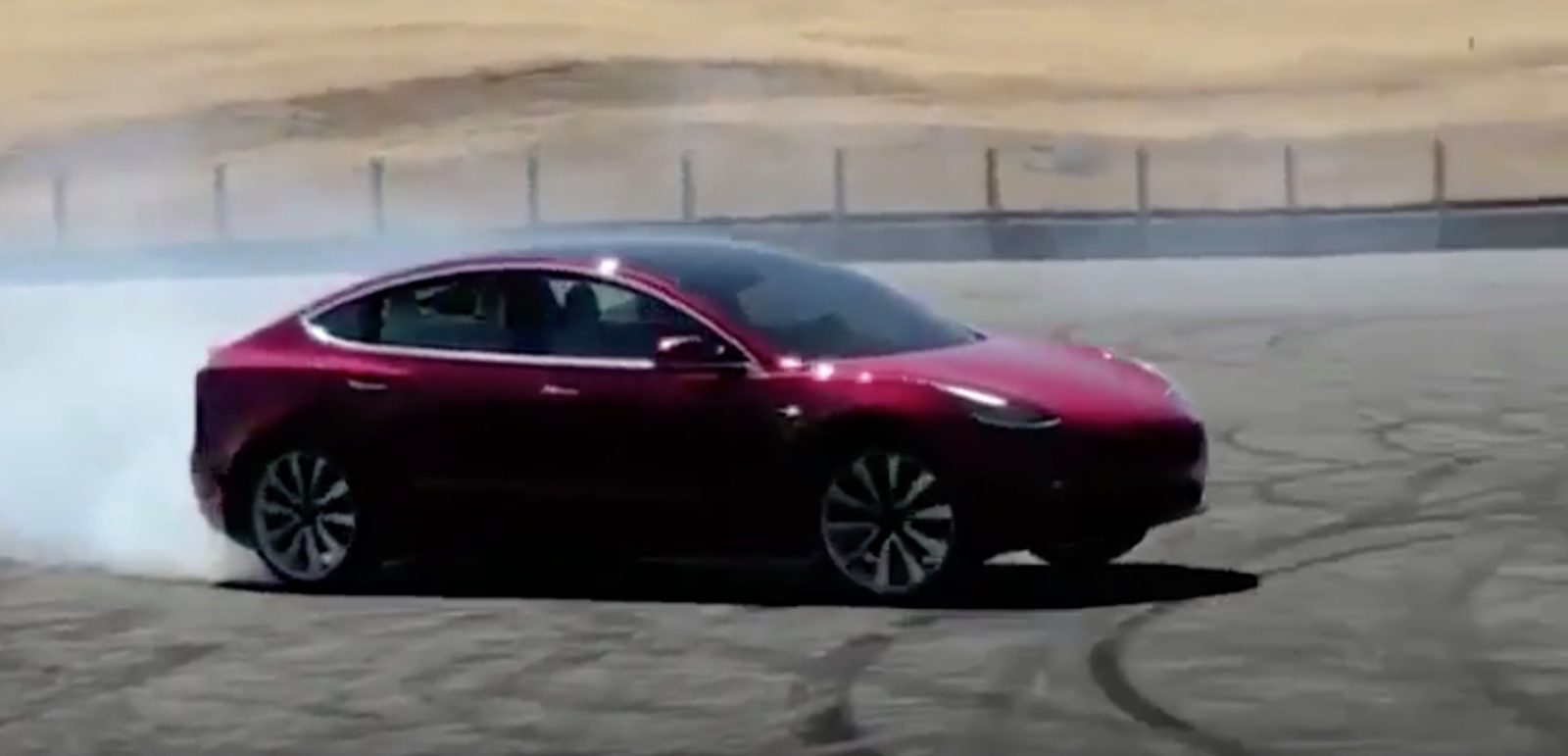Elon Musk dropped more than a few gold nuggets in a recent interview with YouTuber Marques Brownlee. One of those was that it would take him three years to develop a $25,000 Tesla. We covered that earlier, but here’s another nugget, this time about Track Mode that’s coming on the Model 3 Performance variant:
“It’s kinda like if you have a graphics card in your computer. You can go in there and change a bunch of settings and you can overclock things.”
Essentially, Musk is saying that Track Mode will allow a Model 3 Performance owner to push their car to the limits of its performance.
Why is overclocking the perfect analogy for that? Overclocking is defined as a way to squeeze as much performance out of a computer’s hardware components as is possible within the limits of their peak capability. But it can also break your computer.
First of all, we need to understand that there’s a difference between a rating and real-world performance. Take the Model 3’s range as the perfect example. The range is rated at 310 miles for all variants, but any Model 3 owner will tell you that’s pretty much a fictitious figure when it comes to the Dual Motor and Performance versions.
Not everyone would be willing to do a range test unless it’s on a closed circuit near a charging point. You don’t want to be stranded when you run out. But even if you’re willing to take that risk, you’re not likely to get the full 310 miles on anything except the Long Range Rear Wheel Drive variant. That’s because the Dual Motor variants are heavier, among other things.
So why does Tesla say 310 miles of range when nobody’s getting that on the Dual Motor AWD or Performance variants? There’s some confusion here that needs to be cleared up.
Even though all the variants (except the upcoming standard battery version) are advertised as having 310 miles of range by the EPA, the actual EPA-cycle ratings are different.
The Model 3’s official documentation with the EPA shows an EPA-cycle range of 334 miles for the Long Range Rear Wheel Drive, but Tesla asked that it officially be pegged at 310 miles. That’s why LR RWD owners regularly report ranges of over 310 miles.
As for the AWD and Performance versions, they’re clearly not as efficient as the RWD, but that is most likely because of the spoiler, more weight from the additional motor, larger wheels and other factors. They have a lower EPA-cycle rating than the RWD, and it’s closer to the advertised 310-mile range.
How is any of that relevant to Track Mode? It’s not, but Track Mode will likely reduce your range, and that could be a bad thing if you’re on a long road trip while trying various tweaks with the new feature.
The point is, you already have a sub-310-mile range, and it could get worse if you try Track Mode on the road, which Tesla explicitly advises against:
“Select Track Mode to enable Tesla’s performance-oriented stability control and powertrain settings configured for track driving.
This mode is designed to be used exclusively on closed courses. For the best experience, only progress to track mode once familiar with the track.”
It could also negatively impact the longevity of various components of your car, like the brakes.
Can you get more range using this feature? No. The software on the DM versions already optimizes individual motor performance and other parameters depending on the driving conditions, so you won’t be able to do to squeeze more range out of your car. That’s not what it’s intended for at all.
And that’s why Track Mode is being limited to the Model 3 Performance. Just as overclocking is typically done on PCs with high-end configurations used by gamers, Track Mode will only be attractive to high-end Model 3 gamers who can afford to have components wear out early. It’s basically a Tesla nerd’s car.
Essentially, Track Mode is to a Model 3 Performance what overclocking is to a gamer’s PC. The software interface allows you to tweak various settings on the Model 3 so you can get a performance boost. But Musk warns that you’re doing this at your own risk. The system will warn you of potential risks in a clear manner, says Musk, but it won’t stop you from applying those settings and breaking something.
Track Mode will warn you when components aren’t working properly or something is being overloaded, but you can still go ahead and continue doing what you’re doing.
As such, it’s a sort of Advanced Settings for expert users only. It won’t be useful for the average car owner, but then again, Musk doesn’t make things for average people.



